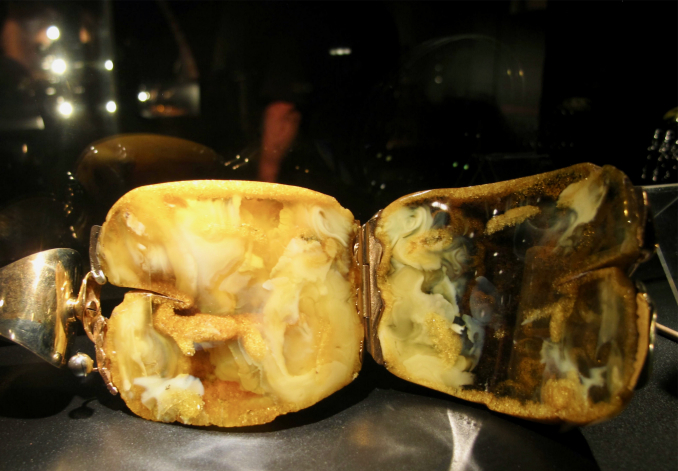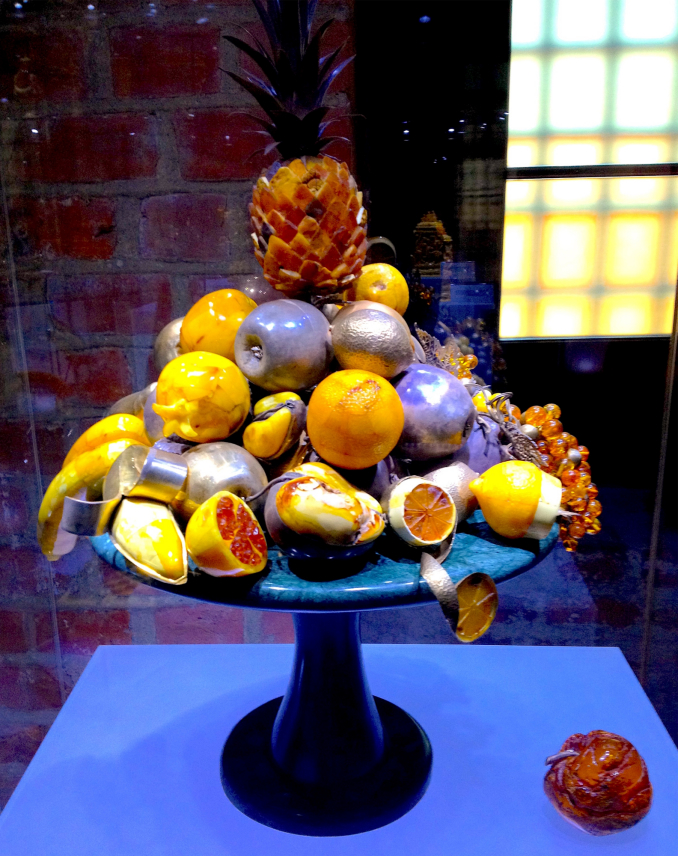Food For The Soul: Amber
“The man was an expert in deceit, and he came to my father’s house bringing a necklace strung with gold and amber beads. While my dear mother and her maids examined and handled it, haggling over the price, he nodded silently to the woman.”
Homer, The Odyssey (Book 15)
Check it Out!
By Nina Heyn, Your Culture Scout
One Saturday in May is designated in Europe for a “Night of the Museums” when all the museums, exhibitions, theaters, archives, historical buildings and even factories open their doors to admit guests for free until midnight. Thousands of residents in each city check out their local museums or make a trip to interesting venues. To celebrate this pan-European event, here is a recommendation of Museum of Amber, a unique little museum in a northern city of Gdansk. The city itself is unusual because it is a port city with rich and complicated history of influences from Germany, Poland and other Baltic nations that have been living and trading there for centuries. The Baltic Sea is a body of water accessed by 9 different countries around it (Poland, Germany, Denmark, Sweden, Finland, Estonia, Latvia, Lithuania and Russia). Beaches at the southern part of that sea, in Poland and Lithuania in particular, are famous for gifts of amber brought in by the waves during winter storms. In late fall and winter, amber fishermen brave the ice-floats and piercing storms to pull out little pieces of flotsam brought up from the bottom of the sea by churning waters. There, in-between seaweeds and pieces of wood, if you are lucky, you can find some pebbles of lightweight, brownish matter. Once polished, they will explode into shiny pieces of natural jewelry that is much prized for its shine, bright colors and the fact that each piece is slightly different from other ones.
You probably have seen amber and possibly even own a piece of jewelry but you may have not realized how different this decorative material is from all other ones. Amber is a pine resin, fossilized at least 40 million ago when giant conifers secreted an abundant tree juice that was then shaped by various geological processes. The resulting fossils are lightweight, very fragile, and sometimes they contain some animal or plant matter – little insects, pieces of moss or pine needles trapped eons ago. One of the most spectacular such inclusions, a small lizard encased in a chunk of honey-colored fossil, is displayed in the Amber Museum in Gdansk.

Photo Credit: Gdansk Amber Museum
The museum was opened in 2006 in a building that started out as a medieval gatehouse, by the Renaissance time it was transformed into a scary torture house, and in the 19th century became a military warehouse. The building has thick brick walls, a tower, and some narrow passages through steep wooden stairs that create a mysterious atmosphere.

The museum devotes several rooms to the history of amber collecting, which archeologists traced to 300,000 years BC. In other words, the use of amber dates back to the Stone Age, right when the human history started. These orange, yellow, reddish or greenish chunks of transparent substance have been always treasured as jewelry but also as medicine (till this day people make a medicinal liqueur with pieces of amber) as well as a magic stone. Amber is electrostatic, i.e. it can acquire an electric charge by contact and separation, and it is able to produce negative ions. It is believed that wearing amber can ease pain and stimulate a healing process.
The most spectacular use of amber is the artistic one. From simple prehistoric amulets and roughly polished beads all the way to modern spectacular jewelry, pieces of amber have fired up imagination of countless artists. This was a jewelry material considered extremely precious and rare by the ancient Greco-Romans, and it was used for millennia on trade routes through Arabia and the Silk Road.
In Middle Ages, Gdansk belonged to the order Teutonic Knights (German monks gathered in a military order similar to Knights Templar but most active in East Prussia rather than in France). Any piece of amber found on their lands was considered a state property, possession of amber by local residents was punished, and carving artists were not allowed to settle in Gdansk. Once the city got incorporated into Poland in the 15th century, the City Council was granted the right to exploit amber deposits, and amber trade and manufacture of carvings started to flourish. In the next few centuries, beautiful creations of Gdansk master craftsmen became favorite royal and diplomatic gifts all over Europe, Middle East and Asia. Their most famous creation, the Amber Room, which has been lost or destroyed during the WWII, is still one of the most mysterious lost treasures in history.
The museum’s displays include a cabinet made in 1724 by a German artist Johan Zernebach in Gdansk, as well as numerous contemporary masterpieces. For example, there is a sculpture of a stand where fruit pieces are made of amber in various shades of yellow, a sculpture of an alien similar to H. R. Geiger creations, an Art Nouveau-style candlestick, and various examples of modern artistic jewelry.
Each such piece requires a deep understanding of the material (it is extremely fragile and it changes color and look when heated or exposed to chemicals), and sometimes using old or complex techniques to construct a large sculpture. Since this a natural material, there is a huge variety of shades and shapes of amber that allow for so many different styles.

Photo credit: Nina Heyn
The museum is right in the middle of Gdansk Old Town, where each picturesque street is full of little stores that sell nothing but amber jewelry. You can find heavy bead necklaces, huge single pendants in all colors of yellow and orange, countless earrings and bracelets and pins, and various fantastic creations from sterling silver and amber. The tourist favorites are small chunks of amber that contain prehistoric insects or plants but these are of course the most expensive.
It you ever travel in Northern Europe, check out Gdansk and its amber treasures.

